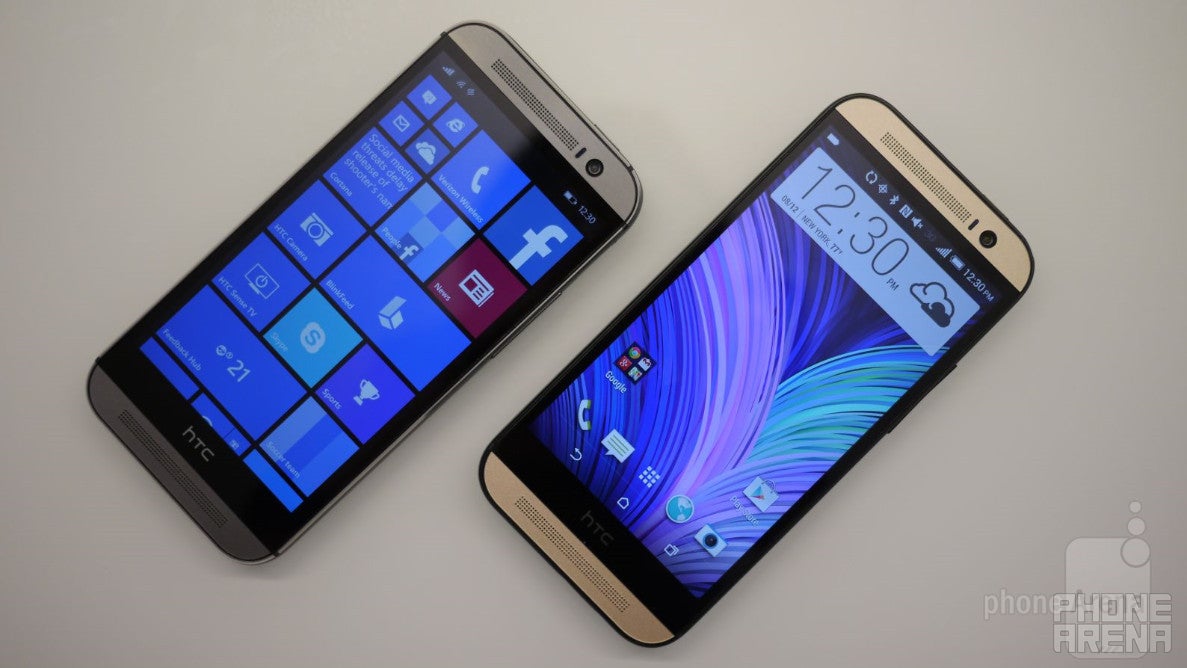HTC One M8 for Windows vs HTC One M8 for Android: first look

Oh boy! This first look comparison between the HTC One M8 for Windows against its Android-powered sibling is an intriguing one, especially when we can all argue that the Android one did it first. By that, we’re talking about its design and hardware, of course, leaving the software experience to be the main differentiator between them. Well, to be more specific, we’re scoping out the Harmon Kardon edition of the HTC One M8, which sees some additional enhancements over the usual HTC One M8 for Android.
Design
Come on. Is there really one smartphone we can vouch for that has the superior design? Not really, considering that they’re pretty much identical with one another, aside from the obvious difference in paint jobs. From the get-go, the HTC One M8 for Windows is only available in gunmetal grey – whereas the HTC One M8 for Android is available is in a handful of colors, which vary depending on the carrier version you snag. In particular, our Sprint Harmon Kardon version has a gold and black color scheme, which we’re not totally sold by, but nevertheless, there are other colors of the Android powered smartphone that are more pleasing. As we’re told by HTC, the made-for-Windows smartphone will hopefully be available in other colors as well.
Display
Sharing the same 5-inch 1080 x 1920 Super LCD-3 display with Gorilla Glass 3, there’s not one we can say right now that proves to be minutely superior than the other. Indeed, they’re identical in the specs department, but until we put it through our own display benchmark process, we can’t comment on the little things that might make them different. For what we can gather at this exact moment, the two are crisp, rich in detail, offer great viewing angles, and have enough potent lighting to make out.
Interface
Now this is where things become heated, as HTC has focused a lot of its attention on building and expanding its Android experience – more so than Windows, obviously. Looking at the HTC One M8 for Android, it has manages to stand proud and tall for the distinct qualities of its Sense 6.0 interface on top of Android. As we’ve come to know, it continues to draw us to its modernized looking UI – while employing some slick software features that aren’t too dizzying in totality.
Each of the respective platform experiences has their distinct qualities, but as we’re familiar with, Windows Phone operates on a uniform platform – where its features, operation, and overall look and feel don’t drastically differ from one Windows Phone device to another. To tell you the truth, Sense 6.0 on top of Android continues to be the more compelling one between the two, as it receives more love and tender care from HTC. From its iconic looking widgets, to its integration of BlinkFeed with the homescreen, there are just more profound qualities with the Android experience. In contrast, many of experiences that make the HTC One M8 so memorable are lost – broken down to being apps instead.
Processor and Memory
Reading the specs sheet, they share the same quad-core 2.3GHz Qualcomm Snapdragon 801 SoC with 2GB of RAM. For high-end smartphones, their performances aren’t all that surprising, since we know the kind of beefy operations that this piece of silicon is able to deliver. The snappiness is in tow with these two, as they handle the same processes with barely any hitches.
At the bare minimum, we have 32GB of internal storage with these two – further supplemented by their microSD card slots.
Camera
Windows Phones have something to be joyful about, as the HTC One M8 for Windows is packing the same duo camera system of its Android counterpart. Yet again, the hardware present between these two are identical – so that leaves essentially the extra set of shooting modes and effects of the HTC One M8 for Android to be the main differentiator. Nonetheless, Windows Phone fans will have access to the same unique uFocus feature, allowing photos to receive that professional-grade look with the bokeh effect applied post shot.
As it currently stands, these two are shaping to rival one another, which isn’t a shocking revelation, but we’ll need to take a closer inspection later on to try and determine if there are any differences with their qualities.
Expectations
HTC is still a top-contender in the Android space, where the HTC One M8 remains to be one of the best designed smartphones of the year. The more we think about it, the more we’re torn on whether or not we would’ve preferred a totally different designed or named phone for the company’s major Windows Phone powered smartphone in a while. Sure, they could’ve made some minor tweaks in the design and named it something else like the HTC Titan III, but in some strange way, their actual decision makes a whole lot of sense.
Take the stunning design of the original HTC One M8, make it run the latest Windows Phone experience, and simply call it the HTC One M8 for Windows. Yeah, it sounds crazy, or even lazy, but heck, it’s hard to deny that the brand recognition of the phone is something that resonates deeply with consumers. Throw in all of the advertising and marketing they’ve done already for the M8, it’s a logical reasoning for them to keep the established brand name with its Windows Phone.

Follow us on Google News













Things that are NOT allowed:
To help keep our community safe and free from spam, we apply temporary limits to newly created accounts: